Amritland: The Sounds of Amritsar in England
Raminder Kaur
In May 2023, Hazuri Ragi Shri Darbar Sahib Amritsar Bhai Bhupinder Singh and his group (jatha) travelled from Amritsar to Birmingham airport for a five-month tour of gurdwaras (Sikh places of worship) to perform kirtan. They have been touring abroad since 2014, first in Canada, then in 2021 in England, mainly concentrating on gurdwaras in the Midlands area - Sandwell, Birmingham, Derby, Leicester, Willenhall - and Southall, Hayes and Hounslow in Middlesex. The head ragi (musician-singer) explained, ‘It’s turn by turn, not guaranteed. Perhaps we will go to another country next time. It all depends on whether we get a call from abroad to come.’
Among all the places Smethwick is their favourite for the friendly committee, accommodation and the neighbourhood that has everything that Panjab has to offer – only cleaner and in a cooler climate. They saw the Guru Nanak Gurdwara as their ‘headquarters’ for being their main sponsor who also hosted them with free accommodation, food and other services such that they felt like it was their ‘second home.’
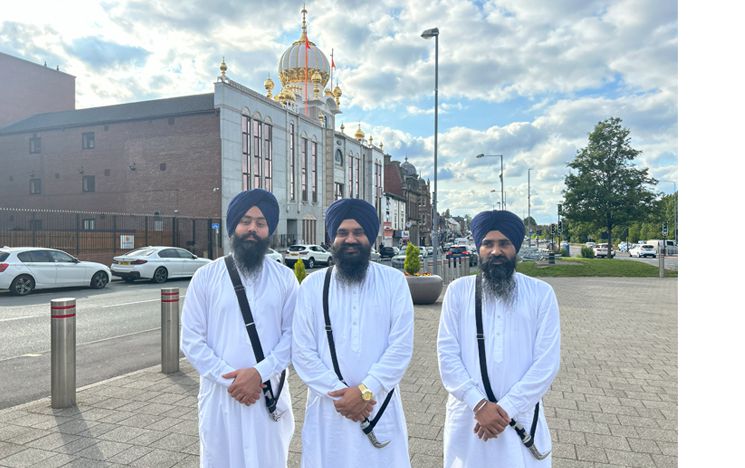
Figure 1: Hazuri Ragi Shri Darbar Sahib Amritsar Bhai Bhupinder Singh and group in front of Guru Nanak Gurdwara Smethwick
Relations between most gurdwara committees are cordial and arrangements are made to share ritualistic experts accordingly. As there is another gurdwara down the road about ten-minute walking distance, they also perform there while staying in their headquarters. Their tours were integrated with established and new migrant networks in England. The jatha have relatives in the nearby town of Willenhall, and their family in India had also visited for a month.
Bhupinder Singh, the head harmonium player has been playing with his older brother, Kulwinder Singh, a tabla player for about twenty years. The third member, Jaskirat Singh, the second harmonium player, is married into their family and was recently invited for the contracted assignment overseas.
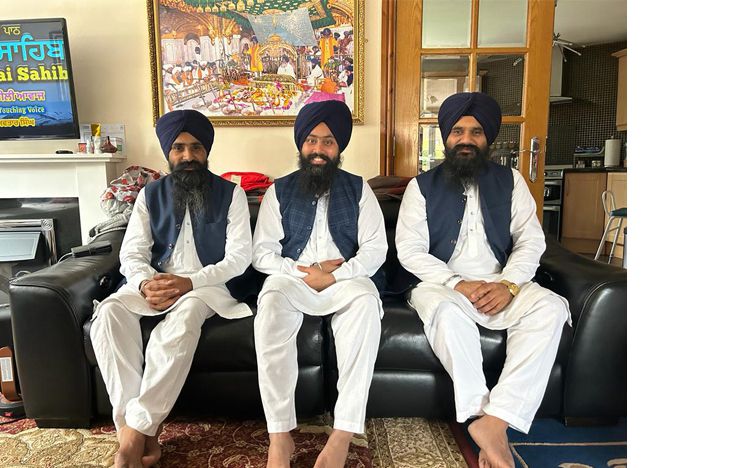
Figure 2: Hazuri Ragi Shri Darbar Sahib Amritsar Bhai Bhupinder Singh (on right) with his jatha in a British Asian home
All are employees of the Shiromani Gurdwara Parbandhak Committee (SGPC), and privately trained except the tabla player who attended the Missionary College in Amritsar to enhance his craft.
Their 2023 tour consists of 1-2 week stays at various gurdwaras mainly in the middle and south of England. The other gurdwaras either ask the committee of the Smethwick gurdwara or directly communicate with the head ragi. Their duties at the Smethwick gurdwara are more elaborate than most other gurdwaras for having a non-step schedule from early morning to the evening. It consists of performing two or three times a day, beginning with Asa di Vaar (A Ballad of Hope) before sunrise around 4am. They perform again around 10.15am for an hour after sukhasan and prakash seva – that is, the installation of the holy scripture, Shri Guru Granth Sahib, in the gurdwara for the day. Then the perform kirtan again around 4.45pm before the evening prayer of Rehras.
During the weekdays, the sangat (religious congregation) is sparse, filled generally with older people and those who come before and/or after work. But this is made up for with packed auditoria at weekends such that two or large halls may need to be opened up if there are also other functions going on – ranging from weddings to funerals. In their free time, the trio practice, rest, meet others of the sangat, and perhaps go for a walk in the neighbourhood. They do not travel further afield, but mainly in and around the gurdwara and with the sangat when they come to pick them up and take them home. One place they had visited was a War Memorial Park in Derby.
The jatha (group) also perform in people’s home such as for akhand path, the ceremonial reading of the Shri Guru Granth Sahib. If the invitation involves path, the gurdwara organises it with the holy scripture transported ceremoniously to people’s home. The householders would have to remove the furniture from the room, set up a place to rest the holy book, Palki Sahib, and cover the floor with sheets for people to sit, thus making a mini version of the gurdwara at home.
For performing kirtan alone, the jatha head can organise directly with the householders themselves. For this, only white sheets are needed on the floor and most of the sitting areas need to be removed or covered so as all sit on the floor unless they had disabilities.
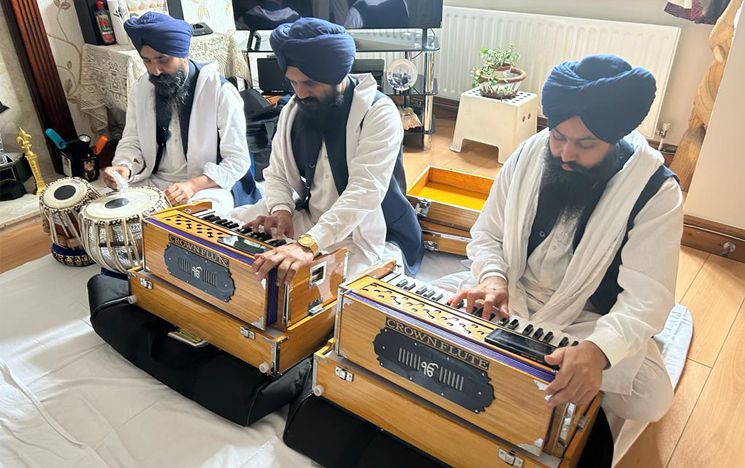
Figure 3: Amritsari ragi performing kirtan in a British Asian home
The understanding is that for this service, the householder would offer seva (selfless service) according to their own whims.
I attended one of these domestic performances in August 2023 for an older couple whose health condition had deteriorated so much that travel to Amritsar had become a near impossibility. Instead, the hazuri ragi could come to their house and perform - as if they were bringing the aura of Amritsar to their British home.
A family member would arrange to pick up the jatha from the gurdwara to the house along with their instruments, sajj consisting of two harmonium and two tabla sets, the second one being a back-up should it be needed. After introductions and drinking a glass of water, they start to perform their kirtan for about an hour. The ragi even took requests for shabad prior to the event.
As so many Sikh families have photographs and even small models of the Harmandir Sahib in their homes, they acted as a substitute for the actual building. A live simulacrum of the central shrine in Amritsar is virtually created.
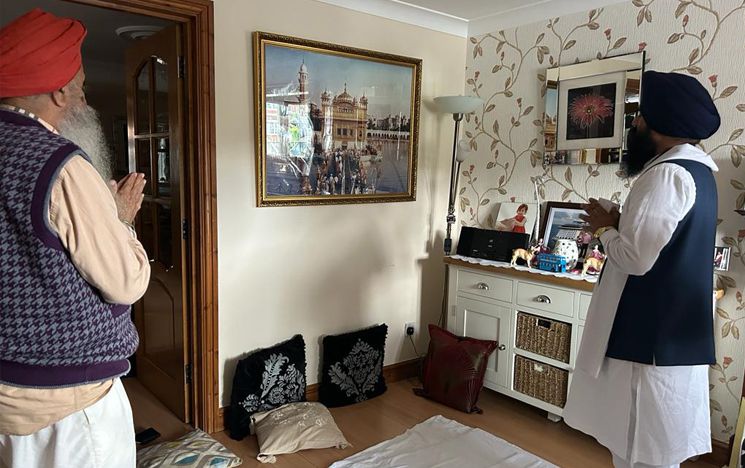
Figure 4: Ardas (prayer) in front of a photo of the Harmandir Sahib
The ragi could also identify those people in the framed pictures of the interior of the Harmandir Sahib as they had grown up with these people, the brothers’ father previously being a priest, granthi, in the Harmandir Sahib.
As the group performed, the householders would show their appreciation by offering their seva. As one man said: ‘It was sukhshanti – peaceful and blissful.’ One woman with physical disabilities sat on a chair at the end, listening and singing along. For her the shabad, ‘Dukh Bhanjan Tera Naam,’ was particularly evocative as it recalls a legendary story of healing by the Dukh Bhanjani Ber next to the sarovar around the Harmandir Sahib.

Figure 5: Dukh Bhanjani Ber next to the sarovar around the Harmandir Sahib
She also recalled a contemporary story about a young boy who could not walk. He was bought into the Harmandir Sahib first on a wheelchair and then carried into the sanctum sanctorum. She had seen the video clips (Video Clip) of him trying to get up for ardas. He persisted and, to his own surprise as well as those around him, he eventually stood up. She too prayed that one day this would happen to her, that she could have the powers to be lifted from her seat and stand.
The jatha ended with a little exegesis of the shabad (sung verses) before standing up to do ardas (imploration). For ardas, names of the main householders would be taken so as they are invoked during the prayer for health and happiness (tandrusti).
Afterwards, a vegetarian meal – usually chapati with dal and sabji – or tea with some sweetmeats and savoury snacks would be offered during which general conversation is made. It is during such exchanges that the jatha get to know more about British Sikhs while the latter learn more about their Amritsari guests, any mutual contacts as well as useful shopping tips for gifts for their relatives in India. Kulwinder Singh laughed that the way he dealt with gift obligation for relatives was that he did not take their phone calls!
Before going abroad to any other place, the ragi need to periodically register with the SGPC at the Harmandir Sahib – hazri lana - before agreeing to go to another place. Canada was on the horizon for their next tour in the Vancouver and Surrey area. When back in Amritsar, the jatha perform at Akal Takht Sahib in the Harmandir Sahib complex every evening.
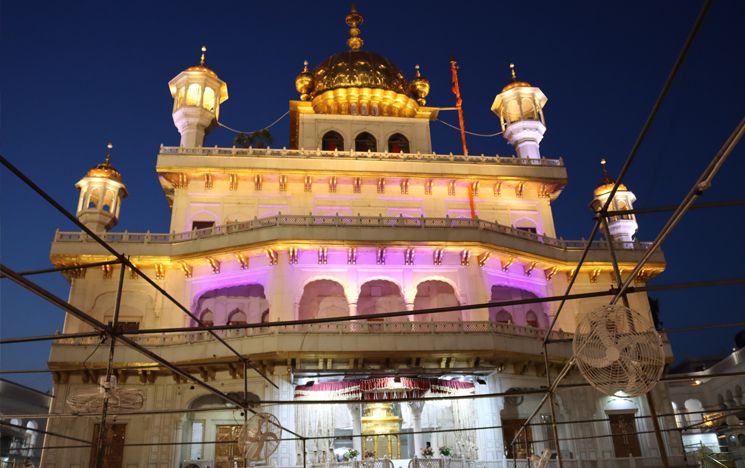
Figure 6: Akal Takht Sahib opposite Harmandir Sahib in Amritsar
Once a fortnight, as SGPC members, their turn comes to perform in the central shrine (Harmandir Sahib) of the Harmandir Sahib.
Their musical talent comes with a spiritual and ethical mission. Bhupinder Singh’s message for the people of Britain: ‘Join with God, read Gurbani [the words of God], speak truth, live with love, create a good society, don’t do bad on others, do good, think good. Then these things will become a natural part of us, and our thoughts will also become good.’